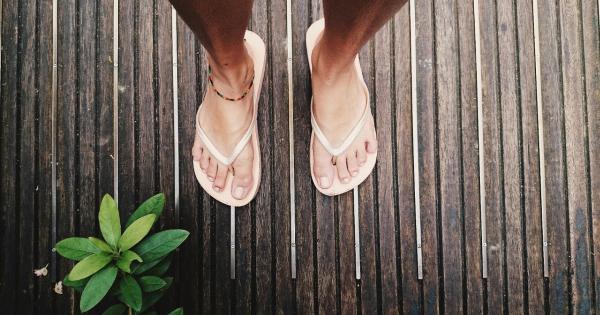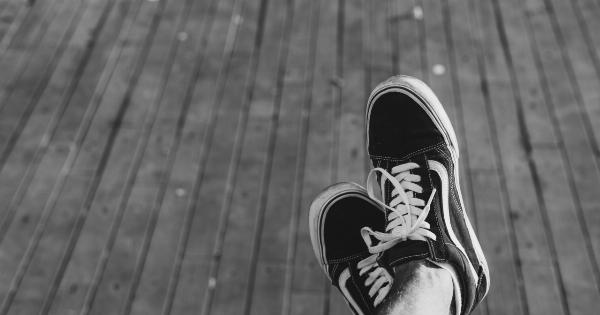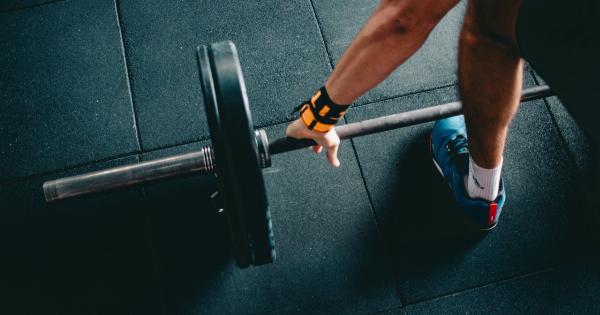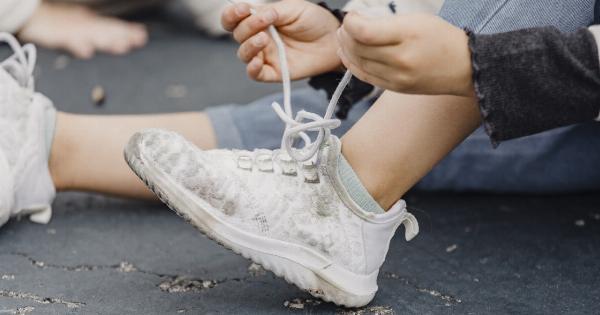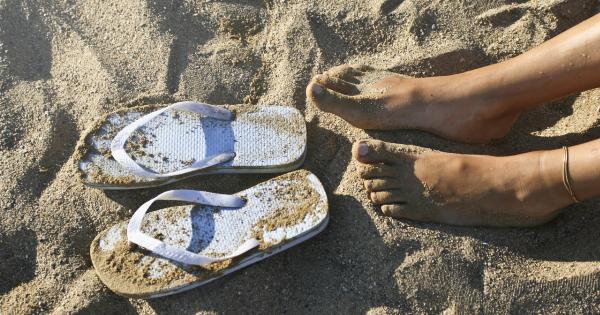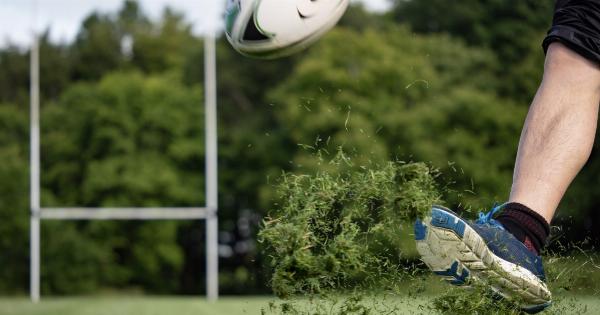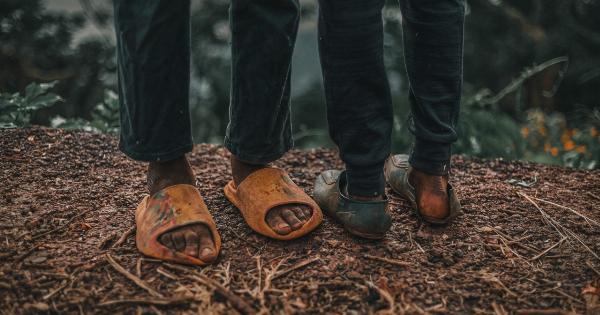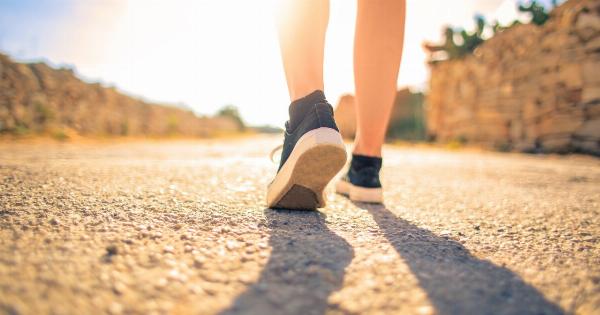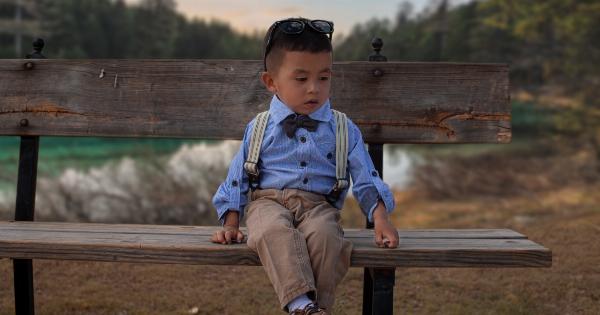Flip flops are a popular choice of footwear, especially during the warm summer months. They are easy to slip on and off, provide comfort, and are a fashionable choice for many.
However, wearing flip flops the wrong way can pose serious dangers to your feet and overall well-being. In this article, we will explore the potential risks associated with wearing flip flops incorrectly and provide tips on how to wear them safely.
The Importance of Proper Fit
One of the key factors in wearing flip flops correctly is ensuring that they fit properly. Ill-fitting flip flops can lead to discomfort, blisters, and even injuries.
When purchasing flip flops, it is important to choose the right size and style for your feet. Here are a few points to consider:.
1. Size Matters
Wearing overly tight flip flops can cause friction and rubbing, leading to blisters and soreness. On the other hand, flip flops that are too loose can increase the risk of tripping and falling.
Always choose flip flops that fit snugly but allow some room for your feet to move comfortably.
2. Arch Support
Flip flops with little to no arch support can cause strain on your feet, leading to pain and discomfort. Look for flip flops that provide adequate arch support to ensure proper alignment and prevent foot-related problems.
3. Quality Materials
Investing in flip flops made from high-quality materials can make a significant difference in terms of comfort and durability. Cheaply made flip flops can wear out quickly, lose their shape, and even increase the risk of slips and falls.
Opt for flip flops made from materials such as rubber or leather, which offer better support and longevity.
Impact on Posture and Gait
Wearing flip flops the wrong way can also have a negative impact on your posture and gait. Flip flops lack the support and stability that traditional footwear offers, which can cause biomechanical issues and changes in how you walk.
Here’s how wearing flip flops incorrectly can affect your posture and gait:.
1. Toe Gripping
When flip flops are too loose, you may find yourself gripping the toe post with your toes to keep them in place. This constant gripping can lead to muscle strain and fatigue, as well as changes in how you distribute your weight while walking.
2. Altered Stride
Due to the lack of support and stability, wearing flip flops can cause you to alter your natural stride.
This may lead to an uneven distribution of weight and increased pressure on certain areas of your feet, potentially resulting in foot, knee, or hip pain.
3. Overpronation
Flip flops typically lack arch support, causing your feet to overpronate or roll inward more than they should. Overpronation can strain the ligaments and tendons in your feet, leading to conditions such as plantar fasciitis and Achilles tendonitis.
Risks of Injury
Wearing flip flops the wrong way can also increase the risk of various foot injuries. The lack of protection and support provided by flip flops makes your feet vulnerable to accidents and mishaps.
Here are some common risks associated with incorrect flip flop wear:.
1. Trips and Falls
Loose-fitting flip flops can cause you to trip or lose balance, leading to potentially serious falls. This is especially true when walking on uneven or slippery surfaces.
The open design of flip flops also leaves your feet susceptible to collisions with objects or other individuals.
2. Cuts and Scrapes
Unlike enclosed shoes, flip flops expose your feet to potential cuts and scrapes from sharp objects or rough surfaces. Stepping on broken glass, sharp stones, or thorny plants can cause painful injuries and increase the risk of infections.
3. Sunburn
When wearing flip flops, a significant portion of your feet is exposed to the sun’s harmful rays. Neglecting to apply sunscreen to your feet can result in painful sunburn and increase the risk of long-term skin damage.
Tips for Safe Flip Flop Wear
While flip flops may not be the most ideal footwear for certain activities or environments, you can still enjoy wearing them safely by following these simple tips:.
1. Choose the Right Occasion
Avoid wearing flip flops for activities that require more support and protection, such as hiking, running, or any physically demanding tasks. Reserve flip flops for casual outings or relaxed environments to minimize the risk of foot injuries.
2. Limit Usage Time
Wearing flip flops for extended periods can increase the strain on your feet and exacerbate existing foot conditions. Give your feet a break and alternate between flip flops and more supportive footwear to prevent discomfort and potential issues.
3. Be Mindful of the Environment
Pay attention to your surroundings and choose appropriate footwear accordingly. Avoid wearing flip flops in areas that are prone to accidents, have uneven surfaces, or expose your feet to potential hazards.
4. Opt for Supportive Flip Flops
Consider investing in flip flops that provide better support and stability. Look for options with arch support, cushioned footbeds, and straps that securely hold your feet in place.
5. Take Care of Your Feet
Keep your feet clean, moisturized, and free from infections. Regularly check for any signs of irritation, blisters, or cuts caused by wearing flip flops and promptly address them to prevent further complications.
Conclusion
While flip flops can be a comfortable and convenient choice of footwear, wearing them the wrong way can lead to various foot-related problems and potential injuries.
By paying attention to proper fit, considering the impact on posture and gait, and being mindful of the environment, you can enjoy wearing flip flops safely. Remember to prioritize your foot health and choose appropriate footwear for different activities to minimize the risks associated with incorrect flip flop wear.

